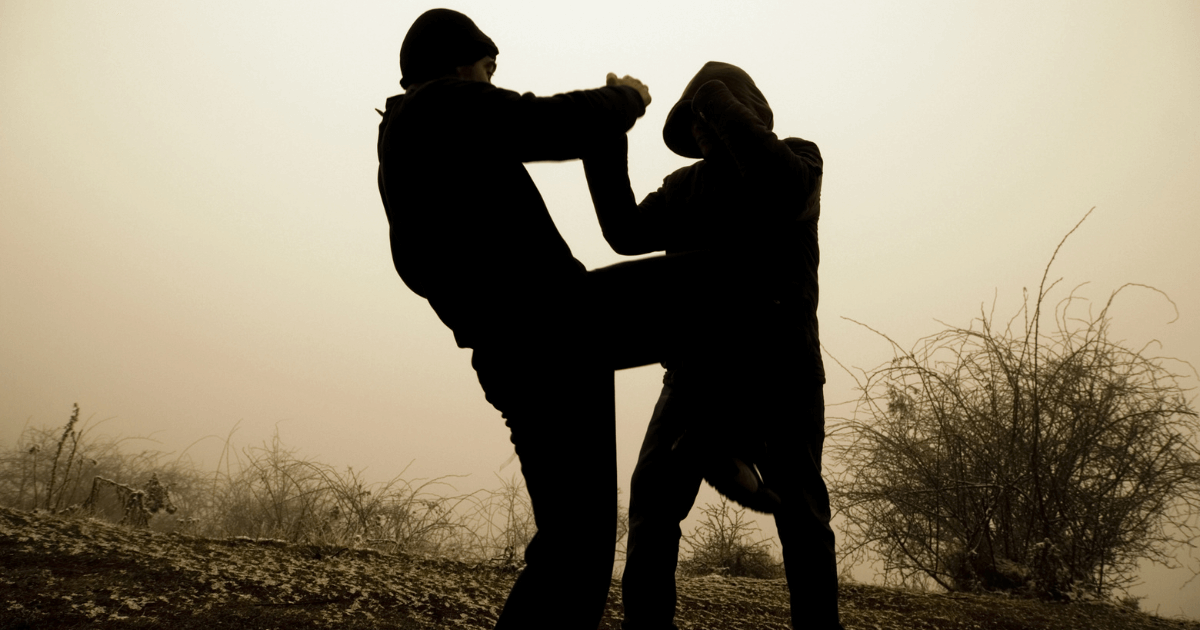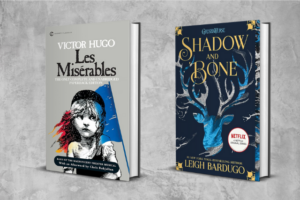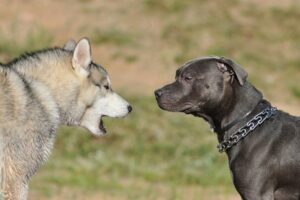
Many conflict-averse writers hate the thought of forcing their beloved characters through myriad fights and arguments. Yet this character vs character conflict is the life-blood of great stories. They can’t exist without it.
Readers love conflict, even if protagonists don’t.
Let’s quickly run through:
What is Man vs Man Conflict?

This sort of conflict occurs when your protagonist runs up against another character who presents an obstacle to their overall story goal or short-term scene goal. This helps fill your story with exciting external conflict, keeping your reader rooted to the page.
This type of conflict features heavily in stories with a single (often evil) antagonist.
Man vs Man Conflict Examples
This kind of conflict exists in nearly every book you read, but some famous examples include:
- Batman vs the Joker
- Superman vs Lex Luther
- Harry Potter vs Voldemort
These examples show the simplistic hero versus villain divide found within many action stories. Unless you’re writing within the genres of superhero/children’s stories, consider making your antagonist a more complex character: one who, as opposed to being entirely evil, rather possesses a different belief system or perspective from your protagonist.
This will make characters “battling” characters in your stories feel much more realistic.
Example of Character Vs Character Conflict: Les Miserables:
Jean Valjean vs Javert in Victor Hugo’s Les Miserables: Our protagonist Jean Valjean, an escaped convict, believes in forgiveness and second chances at life. He acts upon his beliefs, taking in the orphaned Cosette after her mother dies.
His antagonist Javert, a prison guard, believes in Law and Order.
Javert also acts upon his beliefs, remorselessly pursuing Jean Valjean even when this pursuit involves risking his own life. Whilst we don’t root for Javert, we realise he’s faithful to his own (unlikeable) ideology.
Example of Character Vs Character Conflict: Shadow and Bone
Leigh Bardugo presents this kind of conflict in Shadow and Bone trilogy in a believable way.
The Darkling believes the only way he can stop international conflict and exploitation of the magical Grisha is by conquering the world and ruling it himself as one nation.
In contrast, protagonist Alina Starkov believes in the values of freedom, light, and self-determination.
We root for Alina, naturally – but it’s the seductive nature of the Darkling’s challenge which forces her to figure out her beliefs as she fights his persuasive tactics.
This is why, while conflicting characters generally present as an obstacle to your protagonist’s external story goal, this type of conflict may, in the end, drive them closer to their inner goal.
Protagonists need their inner flaws challenged by the story’s conflict.
Conflict gives them the opportunity to grow and develop internally, and it can be particularly useful for helping your protagonist reach (or fail) at their inner goal, because this type of conflict centres around human relationships and needs.
NOTE: You might see people refer to character vs nature conflict as Man vs Character conflict. In this context, it doesn’t relate to male characters, but to humanity as a whole. People also refer to it as Person vs. Character conflict. I’ll be using all three terms throughout this article.
How Does Man Against Man Conflict Work?

Most successful stories feature more than one type of conflict. Examples include:
Les Miserables
Jean Valjean’s conflict with Javert is representative of his conflict with an unforgiving legal and socio-political system (Character vs Society).
As a ruthlessly unforgiving prison guard, Javert embodies everything 19th Century French society represents. This is a society that sends a woman into destitution for having a child out of wedlock, and which massacres students for daring to rebel.
Shadow and Bone
As Alina fights the Darkling, she also fights the King – who uses his allegiance with the Darkling to exploit his Grisha subjects’ power (Character vs Society). She fights her own attraction to the Darkling’s seductive appeal (Character vs Self).
She also fights to prevent the Darkling from imposing supernatural tyranny on the world through his excessive developments in magical technology (Character vs the Supernatural and Technology). And finally, She fights a prophecy which requires her to kill an innocent animal to retain her independence (Character vs Fate).
As Alina flees the Darkling’s army, she journeys across hostile, snow-covered landscapes (Character vs Nature).
How to Write Character vs Character Conflict
Great news! As you edit your novel, it’s easy to ensure you’ve filled your story with strong conflict.
How?
Follow these tips:
Point of View Character
Every scene must have a point of view (POV) character (the character through whose eyes and thoughts we watch the scene unfold). This character can be your protagonist, but doesn’t have to be.
Scene Goal
In every scene, your POV character must have a scene goal. The scene goal should relate to the protagonist’s story goal in some clear way. (See Shane Millar: Creating a Character Goal)
External Character vs Character Conflict
This arises when another character impedes the point-of-view character from achieving their scene/story goal. (This can also help create tension.)
Example: Our POV character, Jane, wants her Jack Russell Terrier, Spot, to win the local dog show. Spot, however, chooses to ignore her instructions, instead scouring the agility field for food and female companionship. Our conflict here is Jane vs Spot (Character vs Character).
Their goals collide. Jane wants success; Spot wants fun. Jane is devastated, finding herself in tears at the scene’s end – she’d hoped the prize money would fund her (overall story goal of starting up a) new dog rescue centre.
Remember: All conflict must have an emotional impact on the POV character. This leads on to…
Internal Character vs Character Conflict
This arises when another character challenges the POV character about their beliefs/ideas/perceptions. This should relate to both scene and story goal.
Example: Jane’s inner flaw is that she wants to be in control at all times. Her need is to learn to relax and enjoy the moment. Although Jane weeps bitterly after Spot humiliates her on the agility field, this scene forms part of Jane’s larger internal journey. By the story’s end, Jane learns to surrender her perfectionism so she can enjoy every moment with her beloved rescue dogs.

Person vs Person Conflict Conclusion
Conflict drives stories forward, forcing protagonists to change. They may not want conflict – but they do need it. Characters who conflict with each other are particularly useful when your character’s growth arises from a change in their relationship to others.

